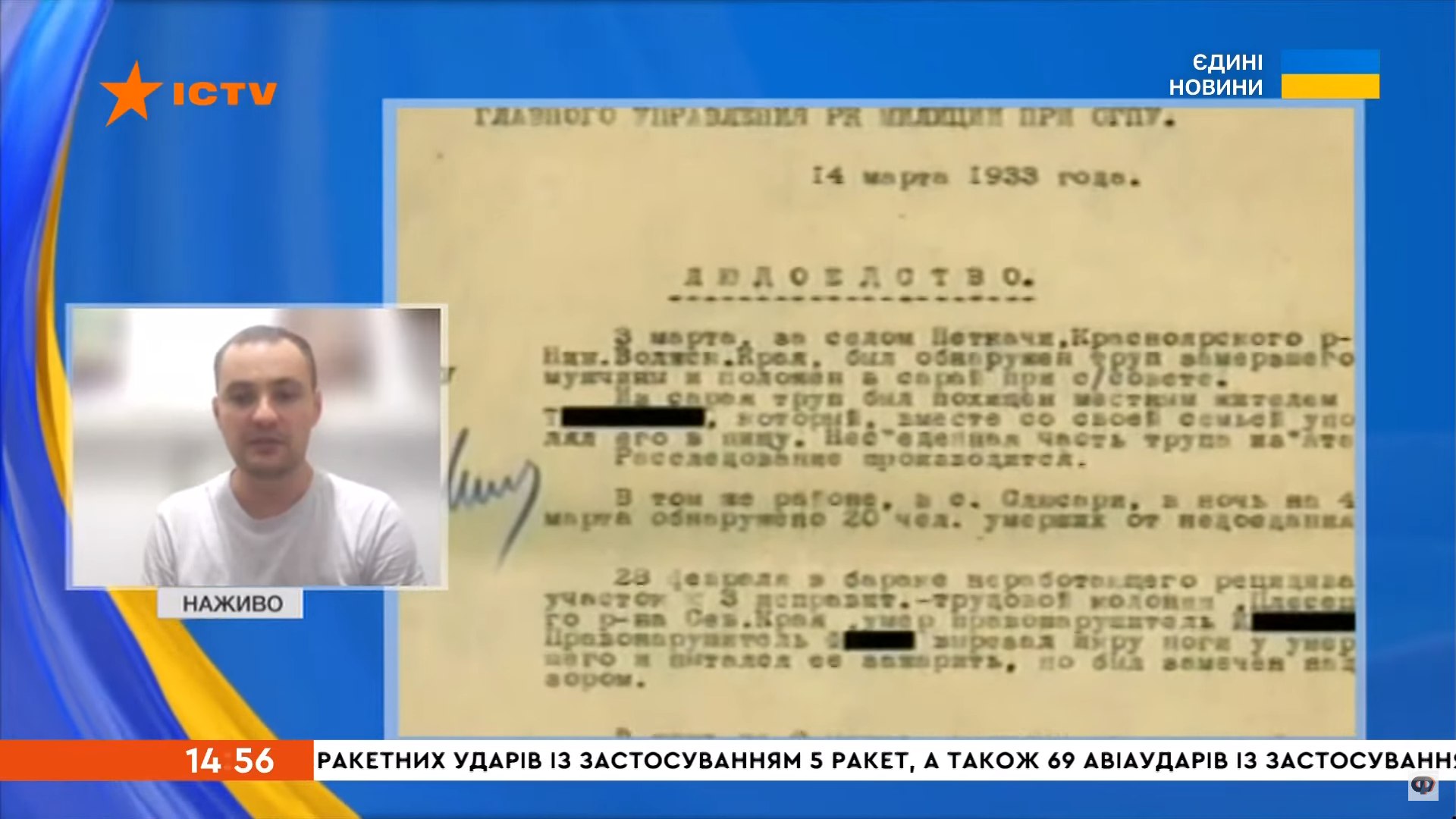Mykhailo Kostiv, head of the Genocide Research Department, participated in the broadcast dedicated to the “law of 5 ears of grain”
On Thursday, August 8, 2024, the head of the Genocide, Crimes Against Humanity and War Crimes Research Department of the Holodomor Museum, Mykhailo Kostiv, took part in the broadcast of the “Yedynyi Marathon” (Single Marathon) dedicated to the history of the “law of 5 ears of grain”, which was passed on August 7, 1932.
The historian spoke about the specifics of the application of the Resolution of the Central Executive Committee and the Council of People’s Commissars of the USSR of August 7, 1932, which was popularly known as the “law of 5 ears of grain” in 1932-1933. In the studio, they discussed the ways of survival of Ukrainians during the Holodomor: “When it comes to ways of survival, there were not many of them left, and when it comes to the actions of the authorities, they tried to reduce and limit them as much as possible. The most common method of survival was to consume surrogates, such as quinoa. Before, Ukrainians had never eaten snakes, mice or products that are absolutely inedible to us. For instance, they steamed and boiled leather clothes in order to have a minimal chance of survival, but not everyone could survive with that…” – said Mykhailo Kostiv.
You can read more about the “law of 5 ears of grain” in the article by Natalia Romanets, a senior researcher of the Holodomor Museum, “Law of five ears of grain”: features of its application in Ukraine.”
